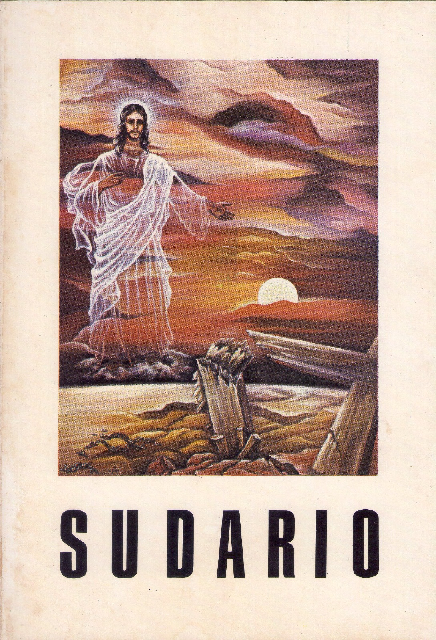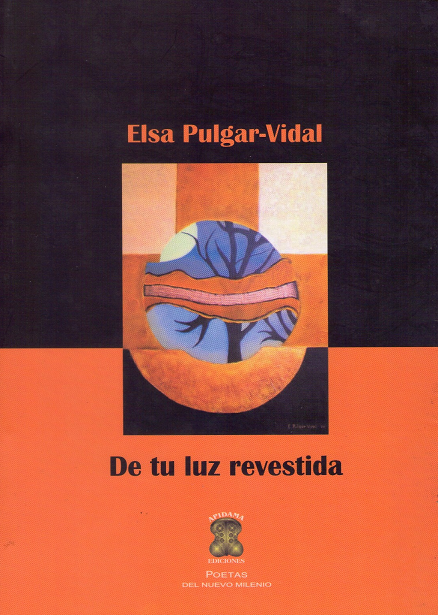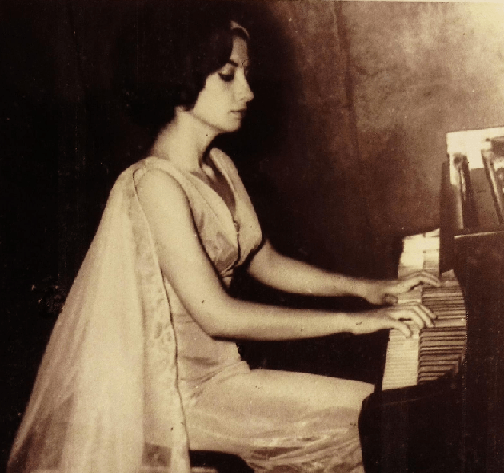Clara Shumann (1819/1896), was an eminent pianist. Endowed with great artistic sensitivity, she knew how to play the piano, a musical instrument created in the 18th century by the Italian Cristofori, a musical history that has endured over time. Successive pianists, like her, managed through glorious performances to remain in the world musical tradition.
Their names are not always recognized because they do not have the glamor of movie stars, but they are there and they belong to different times and countries: Fanny Mendelssohn, Teresa Carreño, Myra Hess, Wanda Landowska, Yuja Wang, Mitsuko Uchida, Zenaida Gonzáles, Alicia Kig, Lola Astanova, Sonya Belousowa and in Peru we have Elsa Pulgar-Vidal from Lima, who, according to the Mexican maestro Luis Herrera, “is one of the best Latin American pianists.” Her real name is Elsa Catalina De Rojas Guedes but from a very young age she adopted the artistic surname Pulgar-Vidal from her husband.
His presentations in Lima and the provinces are innumerable, as well as those made abroad such as the one in 1998 at the “Tumi 98 Festival” in Canada, organized by the Peruvian Arts Board in Toronto at the Scarborough Civic Center where was distinguished “For its invaluable artistic support to the Peruvian-Canadian Community”.
But her love for music did not restrict her to the field of interpretations, but also led her to that of musical compositions, having to her credit works for piano, piano and voice and mixed choir. Some of them have traveled throughout Latin America, such as their “Gran Vals Criollo-Clásico” to Bogotá and Buenos Aires, the waltz “Créele” and the blue-jazz “Beso Robado” to Argentina, having been performed by pianists and singers from those countries. .
Surrealism in his life
However, this great passion is not the only one that moves Elsa, as she was also seduced by the surrealism of Max Ernst and René Magritte and thus began to link it with the musical notes of the piano. His surrealism, unlike that of those mentioned, has a spiritual background like the creations of the Spanish Remedios Varo y Uranga or the English Mary Leonora Carrington and the Mexican María Izquierdo, but with a very personal stamp where his Lima and Peruvian origin stands out. .
and now the lyrics
To crown these two hobbies, Elsa Pulgar-Vidal has reached letters through poetry. But not of the usual poetry, of that speaking of oneself and with oneself, but of that which overcomes the barriers of time and matter to get closer to God, as Saint Rose of Lima, Saint John of the Cross, Saint Teresa did. from Avila, the poor man from Assisi, San Francisco and the German Thomas Kempis.
In Elsa’s verses, summarized under the title “De tu Luz Revestida” (2008) printed in Colombia, we find a spirituality sometimes similar to the saint of Avila: Like a pure crystal I want/for You to be pierced:/to be the mystic light/ of your sacred fire” or to Isabel Flores de Oliva: Do you know, beloved Lord,/ that your boat sails/ through the sea of my eyes? On the other hand, in “Sudario” (2015), she is more human, closer to the world, to love and to her circumstances: “I love you because I always forgive you/ and I forgive you because I love the plot/ of that felled forest, in which you achieve /rescue the inert sap of its marrow/irrigating its rivers when you return”.

To complete his works we quote “Invisible Shield” (2021), a narrative that collects life testimonies.
For her outstanding artistic and professional career, Elsa Pulgar-Vidal received in 2010 the Chasqui de Oro, from the Ministry of Education and in 2017 and 2023 respectively, the Medal of Honor for Merit of Cultural Work and Medal of Honor to the Peruvian Emblematic-Sesquicentennial, by the Congress of the Republic.
To learn about other aspects of her successful career, Lima Gris spoke with this great artist.
Your career as an artist is broad and complete. Do you feel that you fulfilled yourself in all the fields where you ventured or are you missing something?
I feel fully fulfilled as a human being and as an artist. Being a pianist, at the age of 16 I made my debut as a soloist in the National Symphony Orchestra playing Chopin’s Concerto No. 1, and from there other performances continued both in Peru and abroad. This year I am producing my second musical album but this time with my compositions. Some of them are already on Spotify, Amazon, YouTube and other platforms, and you can look for me as Elsa Catalina or Elsa Pulgar Vidal. About Father’s Day, my song “Father, I miss you” has just been uploaded to the networks. I also dabbled in painting, having had 20 individual exhibitions and numerous group ones. As far as narrative is concerned, I was a finalist in the World Mystic Poetry Contest “Fernando Rielo” with the collection of poems “De tu luz revestida.”
Your way of greeting imitating our birds, is it a substitute for singing or do you do it too?
It’s a joke! By whistling I express my joy when I answer the calls of loved ones, that’s why I greet that way. And imitating birds seems to me, in a certain way, as if I were actually singing… I am fascinated by feeling free like them…

You told me you still give piano lessons. Are there many students inclined to that specialty?
Yes, I continue teaching because there are many students who choose this specialty. It is an immense joy to have guided pianists and composers who are succeeding today.
I know you continue to paint, is there an exhibition on the horizon?
Regarding painting, I am always in constant activity in collective exhibitions and, thanks to the virtuality of these times, this June 22 I participate in the “Primitive Tree International Virtual Exhibition” presented by the Society of Creators of Peru Integramundos. I also plan to publish a third book of poetry and start writing short stories. But essentially, now I’m focused on my songs and working on the arrangements with the musicians and singers. During this year I will continue uploading my music to the networks.
Being the mother of six children and being dedicated to teaching and multiple activities, you have managed to do what many women leave behind. What was your main motivation?
Since I was a child, music was like oxygen for my soul and it constituted a wonderful unit in the midst of the diversity of the arts. I never stopped pursuing my dreams despite the pitfalls and vicissitudes I faced. My motivation was the love of Art, since the responsibility of developing my abilities both in music and in painting and poetry did not allow me to be static. My family and my children were my main support and my best work.
Segundo Soto: “The situation of the National Library is critical, we have gone back 50 years”

